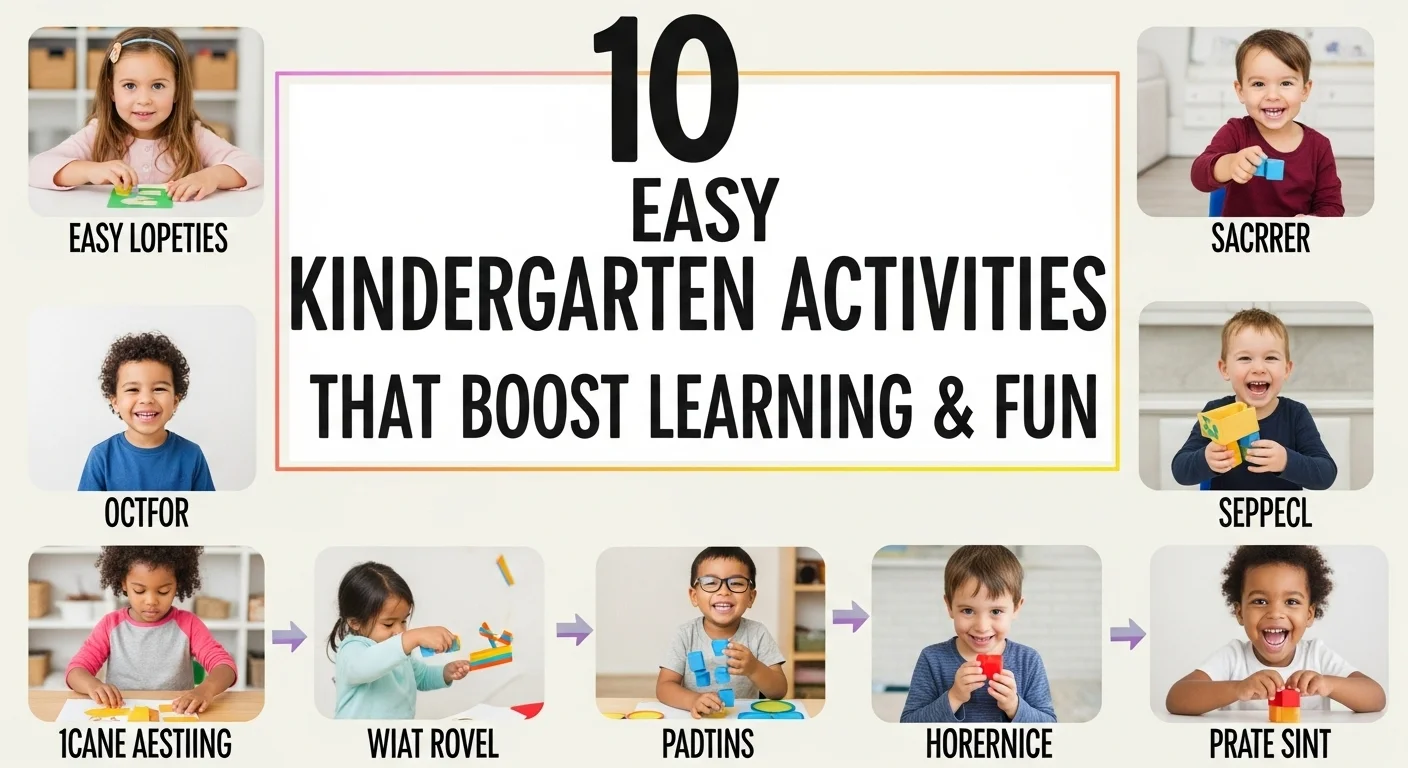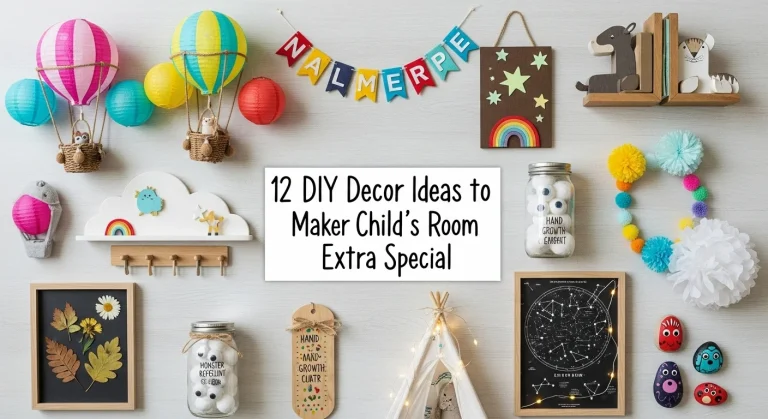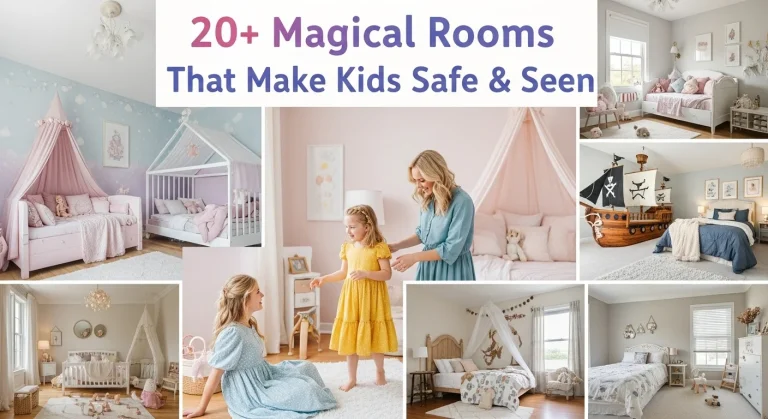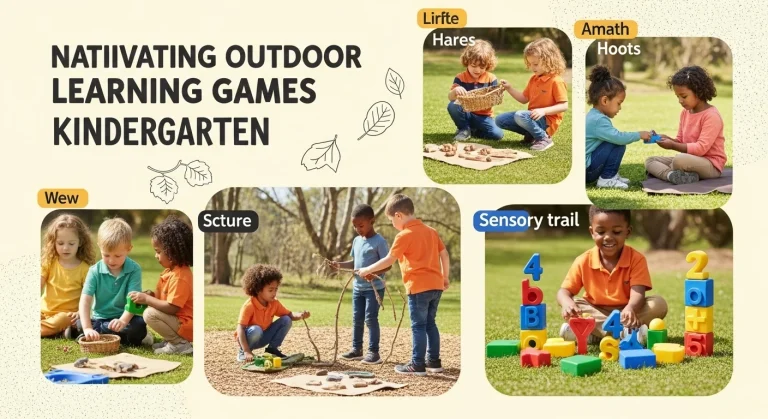10 Easy Kindergarten Activities That Boost Learning & Fun
Introduction
Do you ever wonder how to keep your kindergartener engaged and learning — without screens or stress? Are you tired of constantly asking, “How do I make learning fun at home or in class?”
You’re not alone. Kindergarteners are naturally curious, full of energy, and eager to explore. But without the right mix of fun, learning, and movement, they can quickly lose interest — or worse, melt down.
That’s why we’ve created this list of 10 easy kindergarten activities that strike the perfect balance. They’re designed to enhance early learning skills like reading, counting, fine motor development, and social-emotional growth — all while having fun.
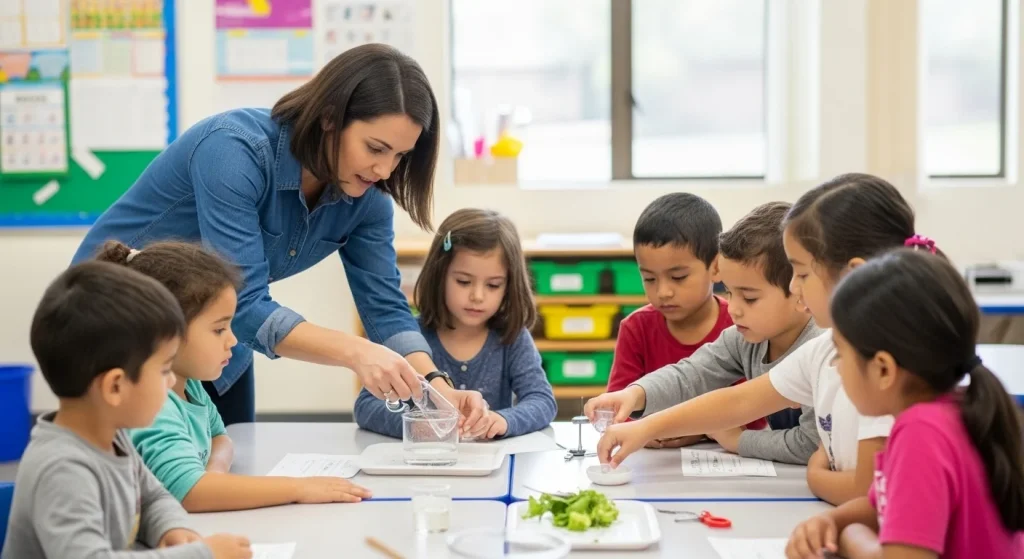
Whether you’re a parent, teacher, or homeschooler, these low-prep activities are proven to spark joy, build skills, and make kids beg for more.
Let’s dive in!
1. Alphabet Treasure Hunt
Hide magnetic or paper letters around the room. Give your child a basket and say, “Can you find the letter that starts your name?” or “Let’s hunt for the vowels!”
Why it works: Reinforces letter recognition, phonics, and builds excitement through movement.
Make it harder: Try lowercase vs uppercase matching.
Extra Tip: Ask your child to say a word that begins with each letter they find to deepen the language connection.
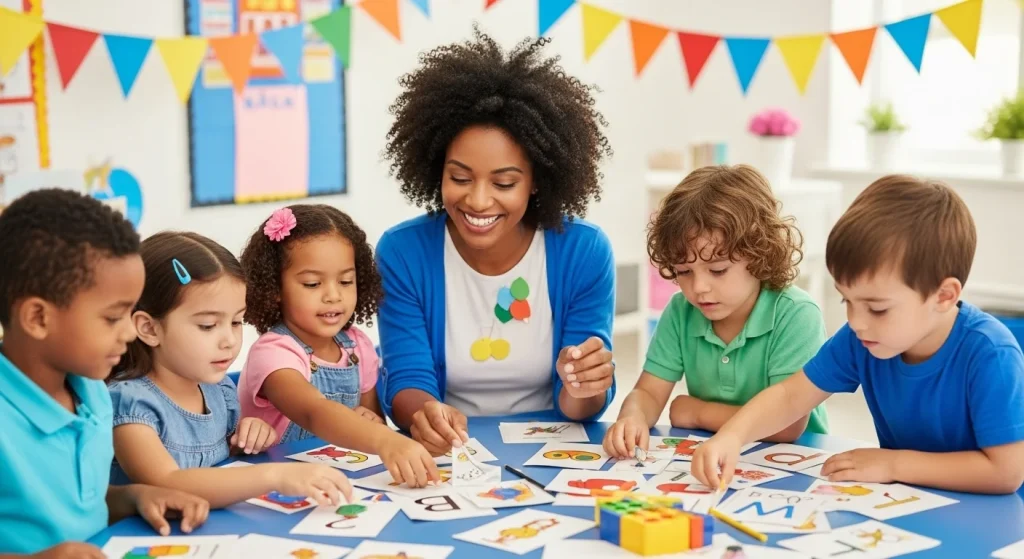
2. Counting Bears Color Sorting
Give your child a handful of colorful counters or bears and ask them to sort by color, then count each pile aloud.
Why it works: Combines color recognition, counting, and introduces math language like “more” and “less.”
Tip: Use muffin tins or ice cube trays to keep it neat.
Extra Idea: Create simple addition problems using the sorted groups: “If we add the red and blue bears, how many are there?”
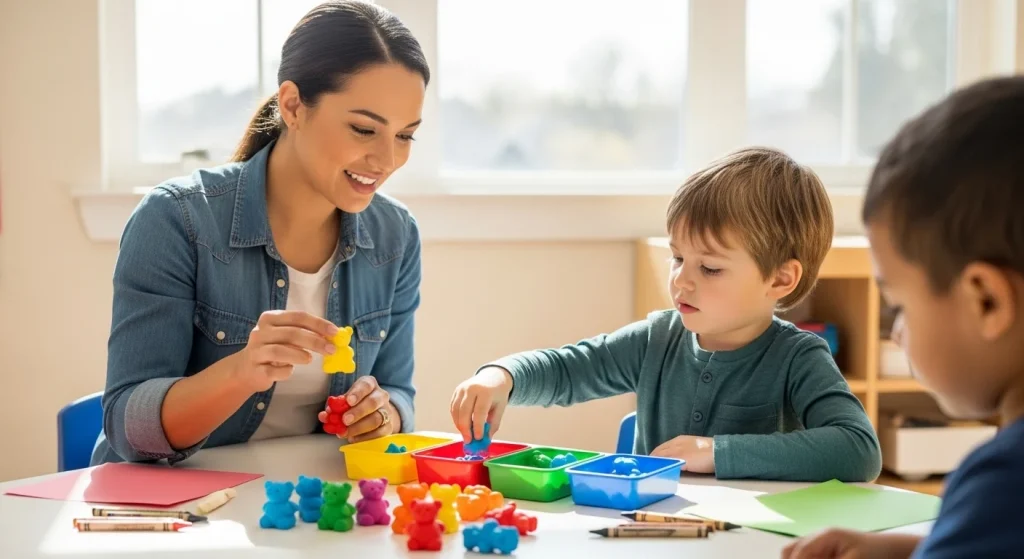
3. Sensory Writing Trays
Fill a shallow tray with salt, sugar, or sand. Use a finger or paintbrush to practice writing letters, numbers, or drawing shapes.
Why it works: Supports letter formation through tactile feedback, especially for kinesthetic learners.
Add-on: Spray a few drops of essential oils for calming scent stimulation.
More Ideas: Practice sight words, draw seasonal shapes, or use letter flashcards for copy work.

4. Story Retelling With Puppets
After reading a favorite book, invite your kindergartener to retell the story using sock puppets or paper dolls they create.
Why it works: Boosts comprehension, recall, and narrative sequencing — all essential pre-reading skills.
Bonus: It builds confidence and public speaking skills too!
Variation: Let your child invent a new ending to the story or act out a completely new tale.
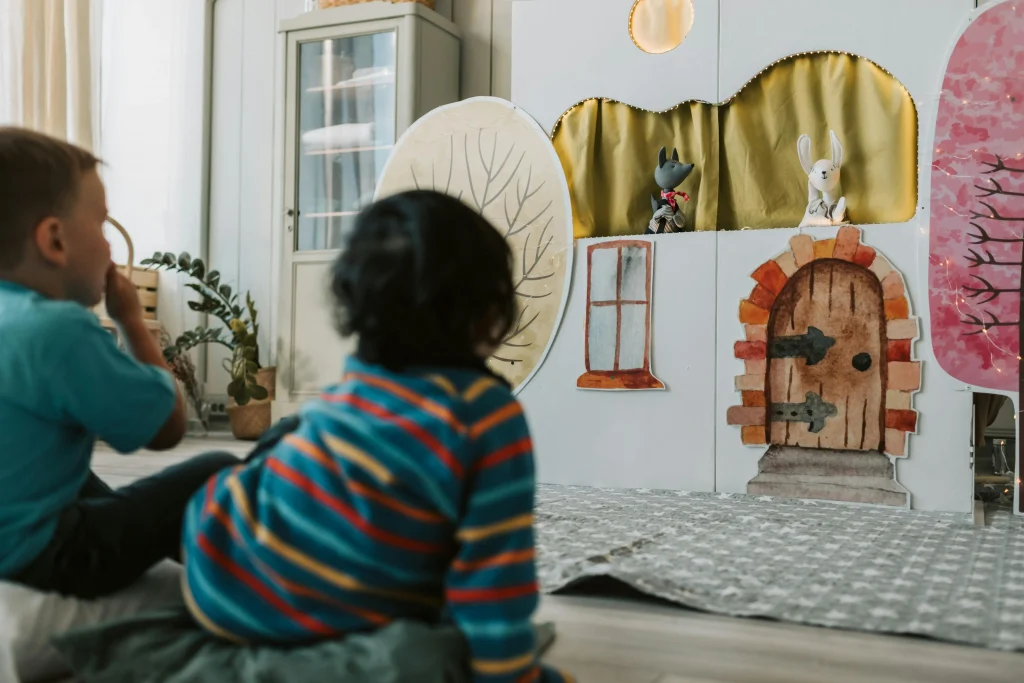
5. Shape Hunt Adventure
Take a walk around your home or school and search for real-life shapes. “Can you find a circle in the kitchen? A triangle in the playground?”
Why it works: Teaches geometry concepts and helps kids connect learning to their everyday world.
Challenge: Have them draw what they found when you return.
Extra Fun: Bring a clipboard and have them check off shapes as they find them.
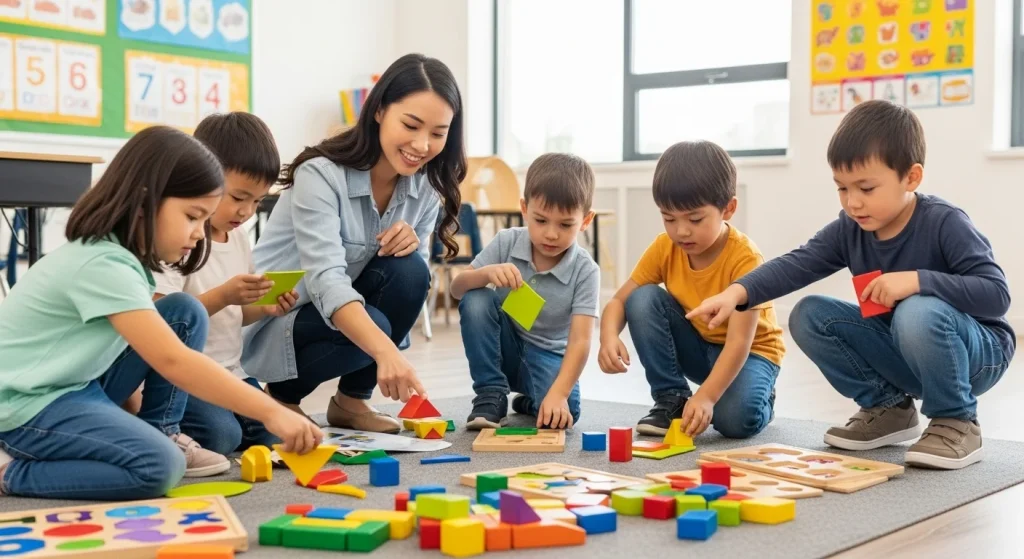
6. Water Painting the Alphabet
Give your child a bucket of water and a paintbrush. Let them “paint” letters, numbers, or words on the sidewalk or fence.
Why it works: No mess, all fun — great for muscle memory and fine motor skills.
Pro tip: Say the sound of each letter aloud as they write.
Advanced Option: Practice spelling simple words like “cat” or “sun” to build early reading skills.
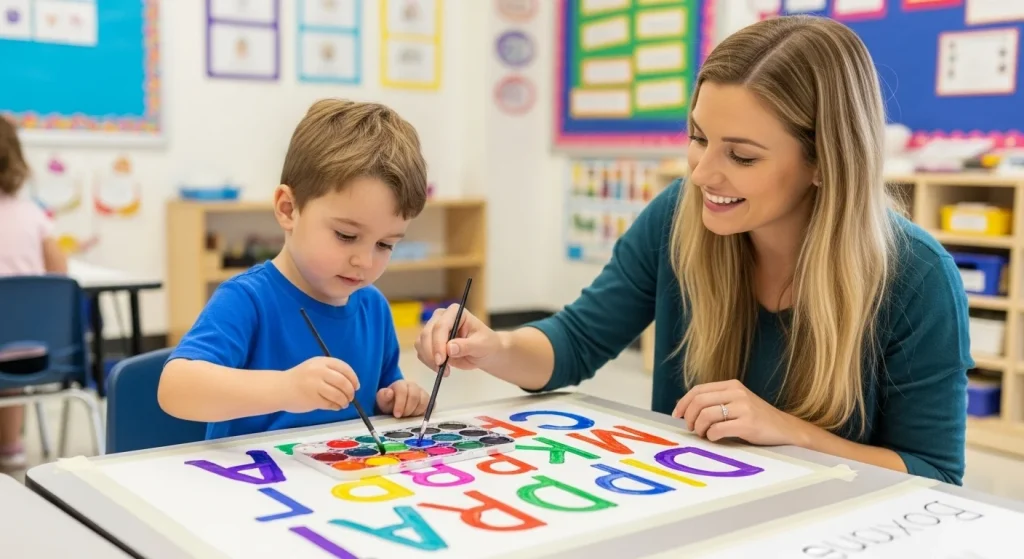
Looking for fun and confidence-boosting hairstyles to try with your little one? Check out these creative kids cornrow hairstyle ideas to add extra smiles to your daily routine.
7. Kindness Jar
Create a jar filled with slips of paper that have simple kindness challenges: “Help a friend,” “Say thank you,” or “Draw a happy picture for someone.”
Why it works: Teaches social-emotional skills and empathy — a vital part of early childhood development.
Parent/teacher tip: Join them in completing one daily.
Add Variety: Decorate the jar together to make it special and let your child pick one slip each morning.
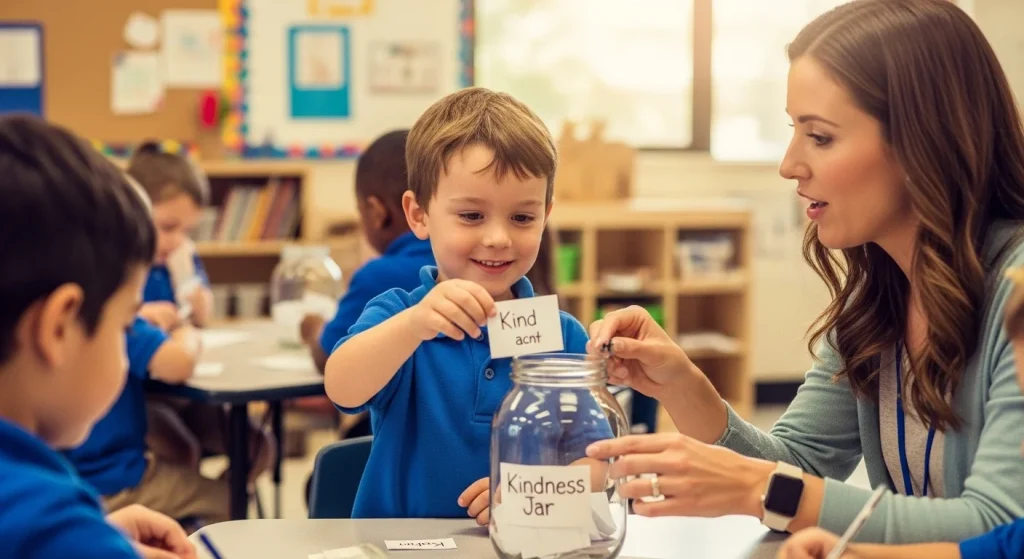
8. Mystery Bag
Place familiar classroom or household items in a bag. Let the child reach in (without peeking) and describe the object using only touch.
Why it works: Builds vocabulary, critical thinking, and descriptive language.
Extend it: Use themed bags like “kitchen,” “nature,” or “school supplies.”
Learning Add-on: After guessing, ask the child to draw the object or use it in a sentence.
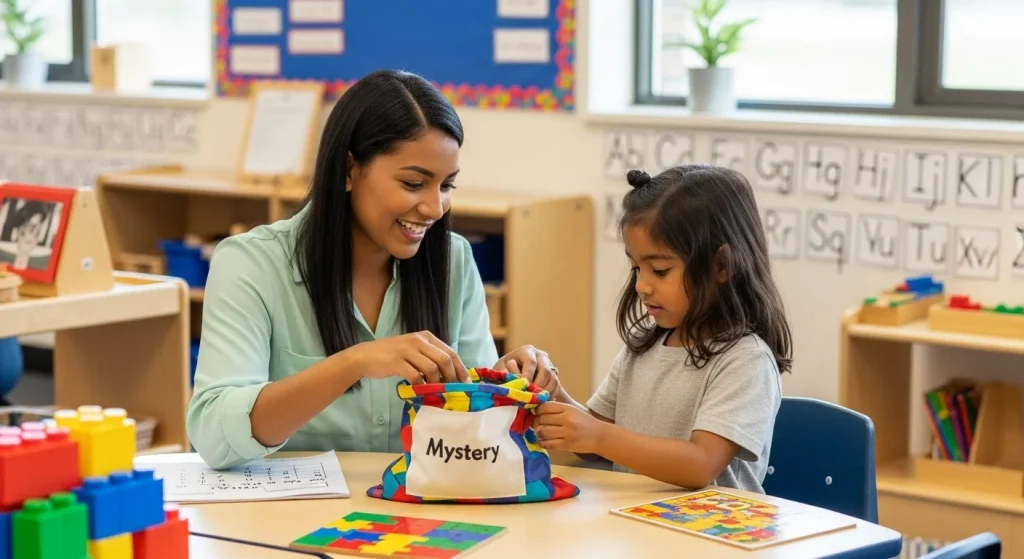
9. Build-A-Pattern Block Station
Offer foam shapes, LEGO bricks, or beads and ask your child to create a pattern: “red-yellow-red-yellow…”
Why it works: Enhances math and logic reasoning while improving visual memory.
Make it social: Partner kids to copy and guess each other’s patterns.
Step Up: Turn patterns into bracelets or art projects to make learning last longer.
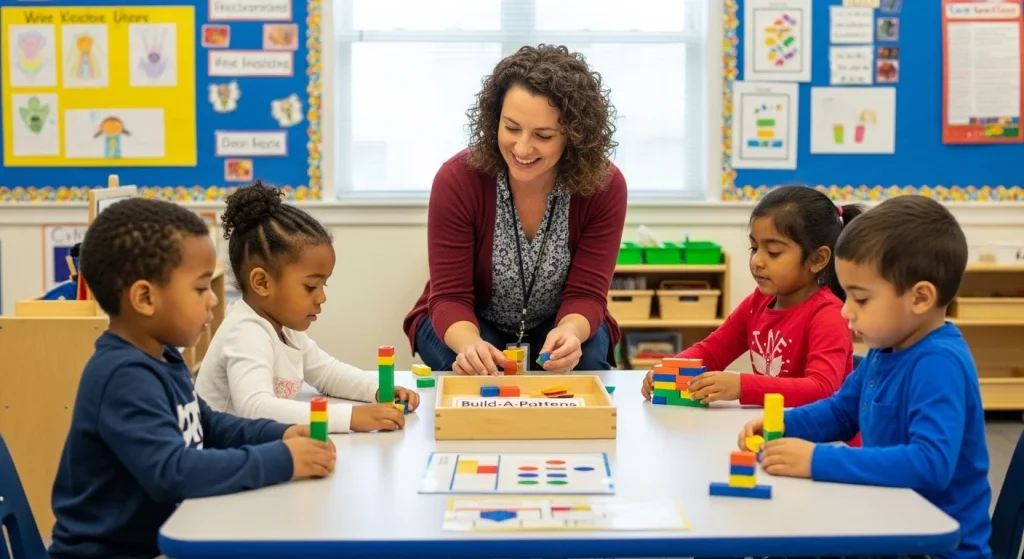
10. Freeze Dance Vocabulary Game
Play music and let the children dance. When the music stops, shout out a word or letter. Ask them to:
- Say a word that starts with that letter
- Make a movement that matches the word
Why it works: Integrates gross motor skills, phonics, listening, and expressive vocabulary.
Fun twist: Let them be the “DJ” and choose the words.
Add Learning: Use sight word flashcards or category prompts like “name a fruit” or “an animal.”
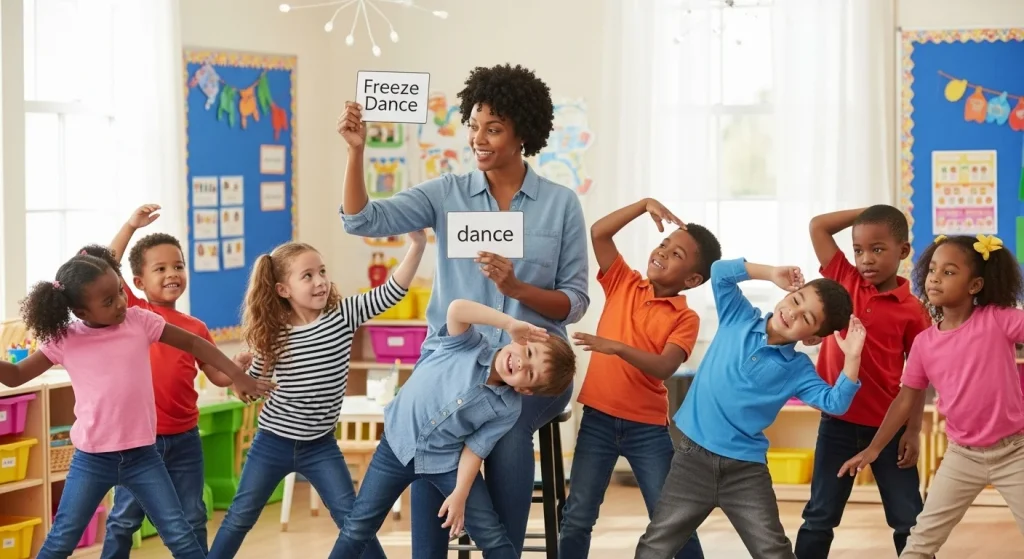
Bonus Activity: Learning Centers Rotation
Set up 3–4 small learning stations: a reading nook, puzzle corner, art table, and sensory bin.
Why it works: Supports independence, structured play, and exposure to diverse skills.
How to Rotate: Use a timer (10–15 mins per station) and a visual chart to help children understand transitions.
Pro Tip: Keep it consistent each day to create a calm and predictable routine.
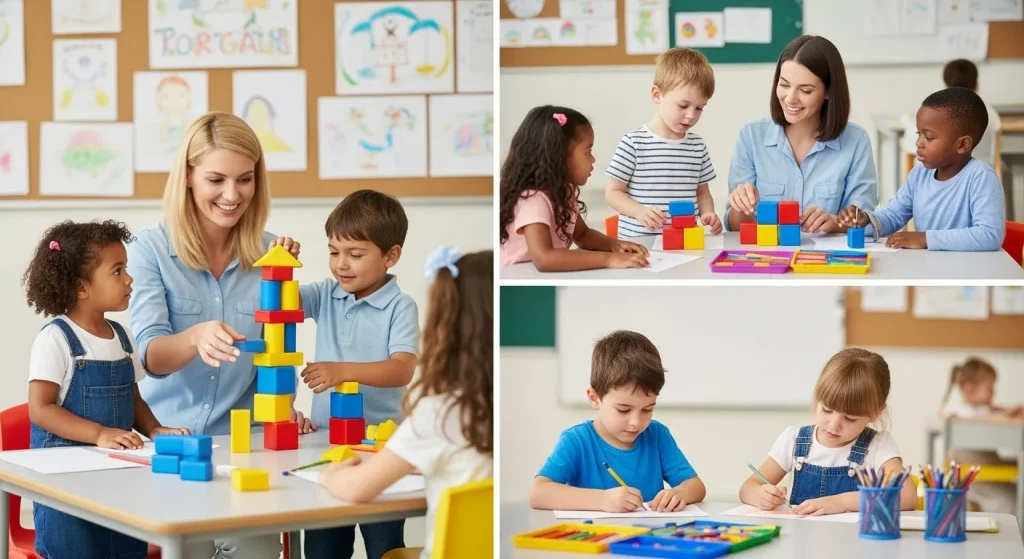
Why These Kindergarten Activities Matter
These aren’t just fun ideas — they’re powerful tools for your child’s development.
Each activity targets key areas like:
- Literacy (alphabet, storytelling, vocabulary)
- Math (counting, patterns, sorting)
- Social-emotional growth (kindness, communication)
- Fine and gross motor development
When kids engage in hands-on activities, their brains light up in ways that passive learning can’t match. These activities help build a strong educational foundation and develop habits that carry into future school years.
The best part? Your kindergartener will be learning through play — the most natural way to absorb, process, and retain information.
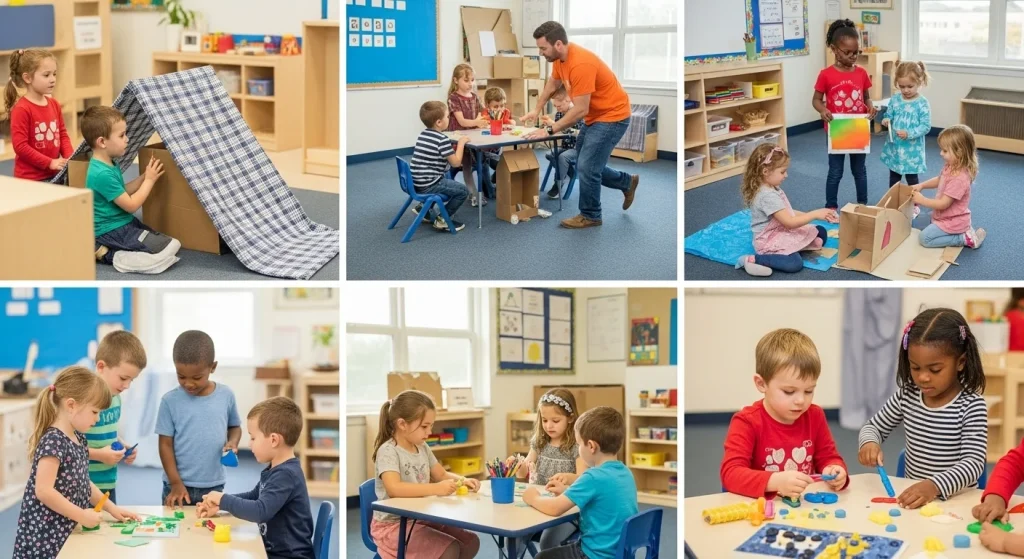
How to Make These Activities a Daily Routine
Instead of trying everything at once, create a weekly plan:
Sample Weekly Plan:
- Monday: Alphabet Treasure Hunt
- Tuesday: Counting + Pattern Blocks
- Wednesday: Sensory Tray Writing + Shape Hunt
- Thursday: Puppet Show + Kindness Jar
- Friday: Freeze Dance Game + Mystery Bag
Consistency builds confidence. Even just 30–45 minutes of intentional learning play each day can make a huge impact.
Quick Tips for Parents and Teachers
- Rotate often: New activities = renewed engagement
- Use what you have: These activities require minimal materials
- Mix indoor and outdoor play: Great for different learning styles
- Celebrate effort: Focus on participation, not perfection
- Observe quietly: Watch what your child enjoys most — this gives clues into how they learn best
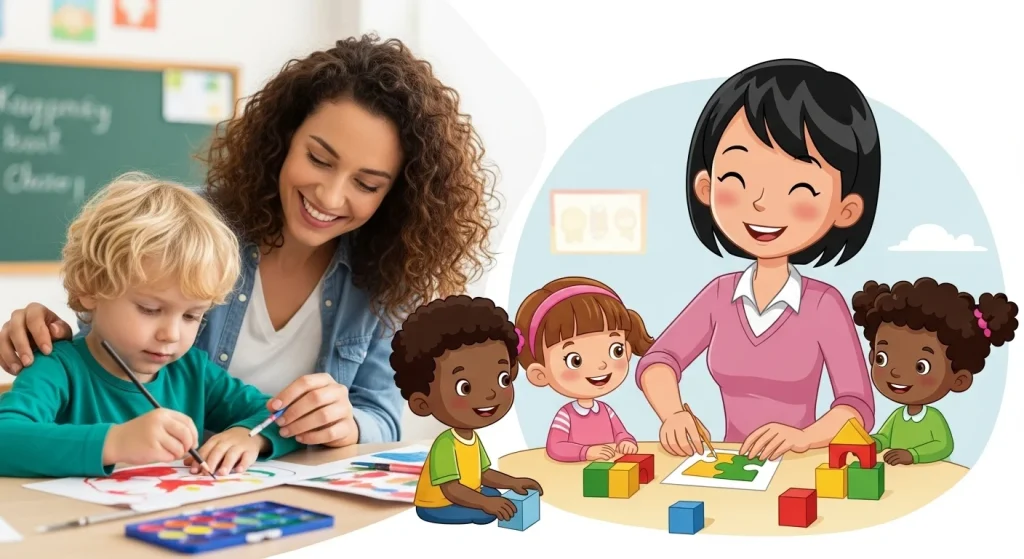
Final Thoughts
Making kindergarten fun and educational doesn’t have to be complicated. These 10 easy activities (plus a bonus one!) offer a perfect mix of movement, creativity, and skill-building that will have your child laughing, learning, and thriving.
Whether you’re dealing with rainy days, high-energy mornings, or simply looking to connect — these ideas are your go-to toolkit.
Remember: Every small moment of play is a big step in your child’s learning journey. Keep it simple, keep it joyful — and keep going.
You’ve got this!

